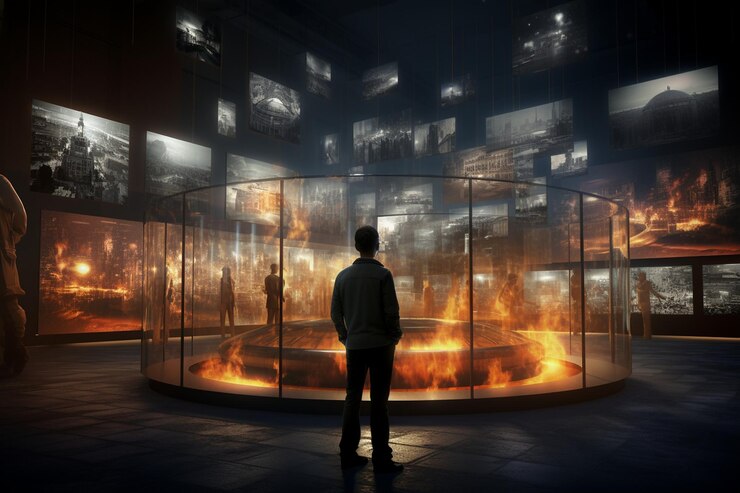The revolutionary impact of visual effects (VFX) technology has fundamentally transformed action cinema, creating impossible worlds and death-defying sequences that captivate global audiences. From computer-generated imagery (CGI) breakthroughs to motion capture innovations, VFX revolutionized action filmmaking by enabling directors to craft spectacular superhero battles, realistic creature interactions, and mind-bending action sequences that were previously unimaginable. This technological evolution not only changed how action movies are produced but also redefined audience expectations and established new industry standards for blockbuster entertainment.
The Pre-Digital Era: Practical Effects and Their Limitations
Before the digital revolution, action movies relied heavily on practical effects, matte paintings, miniatures, and stop-motion animation to create spectacular sequences. Early groundbreaking films like Metropolis (1927) and King Kong (1933) showcased innovative techniques using physical models and optical illusions. These methods, while impressive for their time, presented significant limitations in terms of scale, safety, and creative possibilities.
Action sequences required dangerous stunts, expensive set pieces, and elaborate practical constructions that often restricted creative vision. Directors faced substantial budget constraints and safety concerns when attempting to create large-scale destruction or fantastical elements. The pre-digital era established the foundation for visual storytelling, but filmmakers constantly pushed against the boundaries of what was physically possible to achieve on camera.
The Digital Revolution: CGI’s Breakthrough Moment
The introduction of computer-generated imagery marked a pivotal turning point in action cinema history. Tron (1982) pioneered early computer-generated environments, but the true breakthrough came with Jurassic Park (1993), which seamlessly blended CGI dinosaurs with live-action footage. This technological milestone demonstrated that digital creatures could appear photorealistic and interact convincingly with human actors.
The Matrix (1999) further revolutionized action filmmaking by introducing bullet-time effects and wire-fu sequences enhanced through digital manipulation. These innovations showed how VFX could create entirely new visual languages for action sequences, combining practical cinematography with digital enhancement to achieve previously impossible camera movements and character interactions.
Superhero Cinema: The Ultimate VFX Playground
The emergence of modern superhero films created the perfect testing ground for advanced visual effects technology. Marvel’s Iron Man (2008) launched the Marvel Cinematic Universe with sophisticated CGI armor that convinced audiences of a believable technological superhero. The success of this approach paved the way for increasingly complex VFX-heavy productions.
Films like The Avengers (2012) and subsequent MCU releases demonstrated how multiple CGI characters could interact seamlessly in large-scale battle sequences. These productions required unprecedented coordination between VFX studios, with hundreds of digital artists working on single sequences to create cohesive visual narratives that maintained dramatic impact while showcasing spectacular action.
Revolutionary VFX Techniques in Modern Action Cinema
Motion Capture Technology Advancement
Motion capture technology transformed how action sequences featuring non-human characters are created. Performance capture allows actors to provide the emotional foundation for digital characters, as seen in films like Avatar (2009) and the Planet of the Apes reboot series. This technology bridges the gap between human performance and digital creation, maintaining authentic character interactions within fantastical action contexts.
Advanced facial capture systems now record subtle expressions and micro-movements, enabling digital characters to convey complex emotions during intense action sequences. This technological progression has elevated the storytelling potential of action films beyond mere spectacle.
Real-Time Rendering and Virtual Production
Recent innovations in real-time rendering technology, exemplified by productions like The Mandalorian, have revolutionized on-set filmmaking. LED volume stages allow directors to create immersive backgrounds in real-time, providing actors with authentic lighting and environments during principal photography. This approach reduces post-production time while enhancing creative collaboration between directors and VFX supervisors.
Virtual production techniques enable immediate visual feedback during filming, allowing action sequences to be refined and optimized during production rather than being left entirely to post-production teams.
Impact on Action Film Storytelling and Narrative Structure
VFX technology fundamentally altered how action stories are conceived and structured. Directors no longer face the same physical constraints when designing action sequences, leading to increasingly elaborate set pieces that drive narrative momentum. Films like Gravity (2013) demonstrate how VFX can become integral to storytelling rather than mere decoration, with the technology serving the emotional journey of characters.
The ability to create any visual concept has shifted action films toward more imaginative and diverse storytelling approaches. Filmmakers can now explore science fiction concepts, historical periods, and fantastical worlds with equal visual authenticity, expanding the creative possibilities within the action genre.
The Economics of VFX-Driven Action Films
The integration of advanced visual effects has dramatically altered the economic model of action filmmaking. Modern blockbusters often allocate 30-50% of their production budgets to VFX work, with films like Avengers: Endgame spending over $100 million on visual effects alone. This investment reflects the importance of spectacular visuals in attracting global audiences and generating substantial box office returns.
VFX-heavy productions require longer post-production schedules and international collaboration between multiple specialized studios. The economic success of these films has established visual effects as essential components of tentpole releases, influencing how studios green-light and market action films.
Global Industry Transformation and Workforce Evolution
The VFX revolution has created entirely new career paths and specialized skill sets within the film industry. Digital artists, technical directors, and VFX supervisors have become crucial creative collaborators alongside traditional filmmaking roles. The demand for skilled VFX professionals has led to the establishment of specialized training programs and educational institutions worldwide.
Industry hubs in locations like London, Vancouver, and Mumbai have emerged as major VFX production centers, creating international networks of collaboration that support the creation of modern action films. This global distribution of talent and resources has democratized access to high-quality visual effects capabilities.
Challenges and Criticisms of VFX-Heavy Action Cinema
Despite technological achievements, VFX-heavy action films face legitimate criticisms regarding over-reliance on digital effects. Some critics argue that excessive CGI can diminish emotional engagement and create a disconnected viewing experience. The “uncanny valley” effect continues to challenge filmmakers when creating photorealistic human characters or complex organic movements.
Budget overruns and extended production schedules associated with complex VFX work can strain film productions and limit creative experimentation. The pressure to deliver spectacular visuals sometimes overshadows character development and narrative coherence, leading to spectacle-focused films that prioritize visual impact over storytelling depth.
The Future Landscape: Emerging Technologies and Trends
Artificial Intelligence and Machine Learning Integration
Artificial intelligence and machine learning algorithms are increasingly being integrated into VFX pipelines to automate repetitive tasks and enhance creative capabilities. AI-powered tools can generate realistic crowd simulations, enhance motion capture data, and assist with complex compositing tasks. These technologies promise to reduce production costs while maintaining high visual quality standards.
Deepfake technology, while controversial, offers potential applications for creating realistic digital doubles and enhancing performance capture in action sequences. However, ethical considerations and industry standards continue to evolve regarding the appropriate use of these powerful tools.
Virtual and Augmented Reality Applications
Virtual reality and augmented reality technologies are beginning to influence action film production and distribution. VR allows directors to experience and refine action sequences in immersive environments before committing to expensive production resources. AR applications can provide on-set visualization tools that enhance collaboration between practical and digital elements.
These technologies also offer new distribution possibilities, with VR experiences allowing audiences to participate in action sequences from character perspectives, potentially creating entirely new entertainment formats.
Environmental and Sustainability Considerations
The environmental impact of VFX-heavy productions has become an increasing concern within the industry. Digital rendering requires significant computational resources and energy consumption, leading to substantial carbon footprints for major action films. Studios are beginning to implement sustainability initiatives and green production practices to address these environmental challenges.
Cloud-based rendering solutions and renewable energy adoption by VFX facilities represent steps toward more sustainable production methods. The industry continues to explore ways to balance visual spectacle with environmental responsibility.
Cultural and Social Impact of VFX Action Cinema
VFX-enabled action films have profound cultural influence, shaping audience expectations and inspiring technological innovation across industries. The visual languages developed for action cinema influence video games, advertising, and other media formats. Superhero films, in particular, have become cultural touchstones that reflect social values and aspirations.
The global reach of VFX-heavy action films has created shared visual vocabularies that transcend cultural boundaries, contributing to the internationalization of entertainment content. These films often serve as showcases for cutting-edge technology, inspiring interest in STEM fields and creative careers.
Industry Standards and Quality Benchmarks
The evolution of VFX in action cinema has established new industry standards for visual quality and technical achievement. Academy Award categories for visual effects recognize outstanding technical and creative accomplishments, while professional organizations develop best practices and technical standards for VFX production.
Quality benchmarks continue to evolve as technology advances, with photorealistic rendering, seamless integration, and innovative creative applications serving as measures of excellence within the industry.
Conclusion: The Ongoing Evolution of Action Cinema
The transformation of action movies through visual effects technology represents one of the most significant changes in entertainment history. From the early experiments with CGI to today’s sophisticated virtual production techniques, VFX has expanded creative possibilities while fundamentally altering how stories are told and experienced. The technology has enabled filmmakers to create spectacular action sequences that were previously impossible, while also creating new economic models and industry structures.
As artificial intelligence, real-time rendering, and immersive technologies continue to advance, the future of VFX in action cinema promises even more revolutionary changes. The ongoing evolution of visual effects technology will undoubtedly continue shaping how audiences experience action films, while presenting new challenges and opportunities for creative professionals. The integration of VFX into action filmmaking has permanently altered the landscape of entertainment, establishing visual spectacle as an essential component of modern blockbuster cinema while opening new frontiers for creative expression and technological innovation.
The impact of VFX on action movies extends far beyond mere technical achievement, representing a fundamental shift in how stories are conceived, produced, and consumed in the digital age. This transformation continues to evolve, promising exciting developments in the intersection of technology and creative storytelling for future generations of filmmakers and audiences alike.




